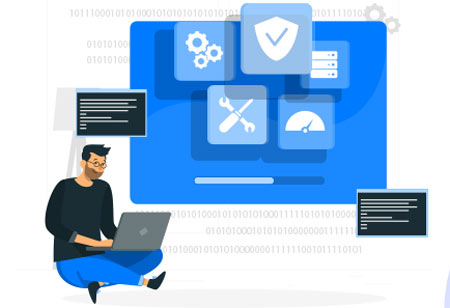THANK YOU FOR SUBSCRIBING
Five Benefits of the New MACH Architecture Approach
The modern, composable software strategy in the enterprise means that smaller solutions can be used that can be seamlessly integrated through a technical standard called MACH, which stands for microservices, API first, cloud-native SaaS

By
Apac CIOOutlook | Monday, February 22, 2021
Stay ahead of the industry with exclusive feature stories on the top companies, expert insights and the latest news delivered straight to your inbox. Subscribe today.
FREMONT, CA: The modern, composable software strategy in the enterprise means that smaller solutions can be used that can be seamlessly integrated through a technical standard called MACH, which stands for microservices, API first, cloud-native SaaS and Headless technology. These best-in-class solutions work together, like a unit. When parts need to be replaced due to changes in demand, it can be easily completed without affecting the rest of the settings.
As an industry advocacy organization, the MACH Alliance was established in June 2020. It is a non-profit cooperative organization that aims to introduce a new, open, and best-in-class enterprise technology ecosystem. The MACH Alliance was founded by Commercetools, Contentstack, EPAM Systems and Valtech, and had 15 members when it started. The MACH alliance will grow stronger in the next few years. Here are the five benefits of MACH Architecture Approach.
1. Easily adaptable
MACH technology supports composable enterprises, where each component is pluggable, scalable, and replaceable, and can be continuously improved through agile development to meet changing business needs. If the demand changes, the supplier includes the necessary changes, or the company replaces them with the required changes. The architecture remains the same; users only need to replace a small part of it to easily complete the operation.
2. Upgrades become a thing of the past
Software as a service (SaaS) means the end of software version control. The cost and effort involved in upgrading the technology is huge and is often underestimated in the total cost of ownership (TCO) conversation. The risk of upgrading is great, especially in more complex environments, especially for organizations that have customized some tools to better meet their needs. This does not take into account the resources spent weeks or months on the upgrade project, and these resources do not actually promote the digital experience for customers. Seamless, rolling upgrades mean you can always use the latest features.
When discussing traditional technology with the organization, the biggest frustration pointed out time and time again is that the team is always behind. Therefore, although vendors may have made improvements to the new version released, they still cannot use these features to improve their digital customer experience because they have not yet upgraded to the new version. Not only do they have no access to the latest version, but the cost is also high when they decide to update.
3. Pay for what you actually use
Before adopting the subscription model, enterprise software buyers found that they needed to make a lot of upfront investment for software licenses, usually charging 10% to 25% of the annual maintenance and support fees based on the selected support level. The large number of initial purchases makes software licenses a part of capital expenditure, which means lengthy and cumbersome decision-making and procurement cycles.
4. Future-proof
MACH software is easy to replace and easy to connect, which not only creates freedom for enterprises, but also enables suppliers to execute at any time. This technical standard allows buyers to establish contact with any other MACH suppliers, if they want to replace some equipment or use self-built features without changing the rest.
5. You own the roadmap
Using the MACH method, all elements of the technical settings can be exchanged for any API-connectable application that can do better, and the enterprise is no longer dominated by the roadmap of the technology giant. This is often a binding setting that will reduce the company's own control and bring setbacks that may cause damage.
With the help of MACH, companies can deliver products and services at their own pace, so that they can increase market value faster on their own terms. In view of some of the previous advantages that have been resolved, such as no need to invest resources in upgrading, the innovative capabilities of the roadmap have also been clearly demonstrated.





